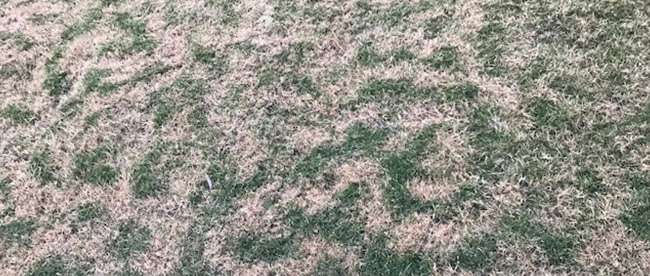In fall, North Texas temperatures can swing wildly. The daily temperature can rise into the 80’s and then fall into the 40’s within the same week. With such volatility, it’s no wonder that grass can sometimes get mixed signals on when to go dormant.
Unsynchronized dormancy is easy to diagnose in lawns. If splotchy patches of brown and green grass cover your yard, it’s likely a result of this phenomenon. The pattern is different from disease and insect damage in the following ways. A lawn suffering from a fungal disease has patches of brown grass that is circular, the center point being the initial point of the sickness. A path of brown grass is a symptom of insect damage, like grubs. Unsynchronized dormancy is irregular and is universal across the whole yard.
The good news is that splotchy grass is nothing to be concerned over. It is a natural occurrence that commonly occurs in fall.
Grass dormancy is a survival mechanism for the plant. As the weather cools, the organism devotes more resources to the crown of the grass, the distribution hub between the roots and the blades, to protect it. This survival process is much akin to how the human body lessens the amount of blood going to the extremities to protect internal organs in cold temperatures.
One of the things that can trigger dormancy quickly in plants is ice. While fall ice storms are a rarity in North Texas, the morning dew has the potential to become ice (if not close to it). If this happens, grass will receive the signal to go dormant and act accordingly. Moreover, it is possible for portions of the lawn to get colder than other parts. When this happens, the result is splotches of dormant and active grass (unsynchronized dormancy).
The fascinating thing about this phenomenon is that it shows that all lawns are different. There can be two neighboring lawns, with similar watering regimens and sunlight, and one may experience unsynchronized dormancy while the other one does not. That is why it’s important to remember that grass is an organism and will respond to stimuli in different ways. In the end, you can put your mind at ease. If you see splotchy grass in fall, your lawn is probably acting perfectly normal in an irregular way.
Further Reading: Fall Lawn Care Maintenance | Ground Temperature and Weed Control | Ground Temperature and Lawn Mowing








